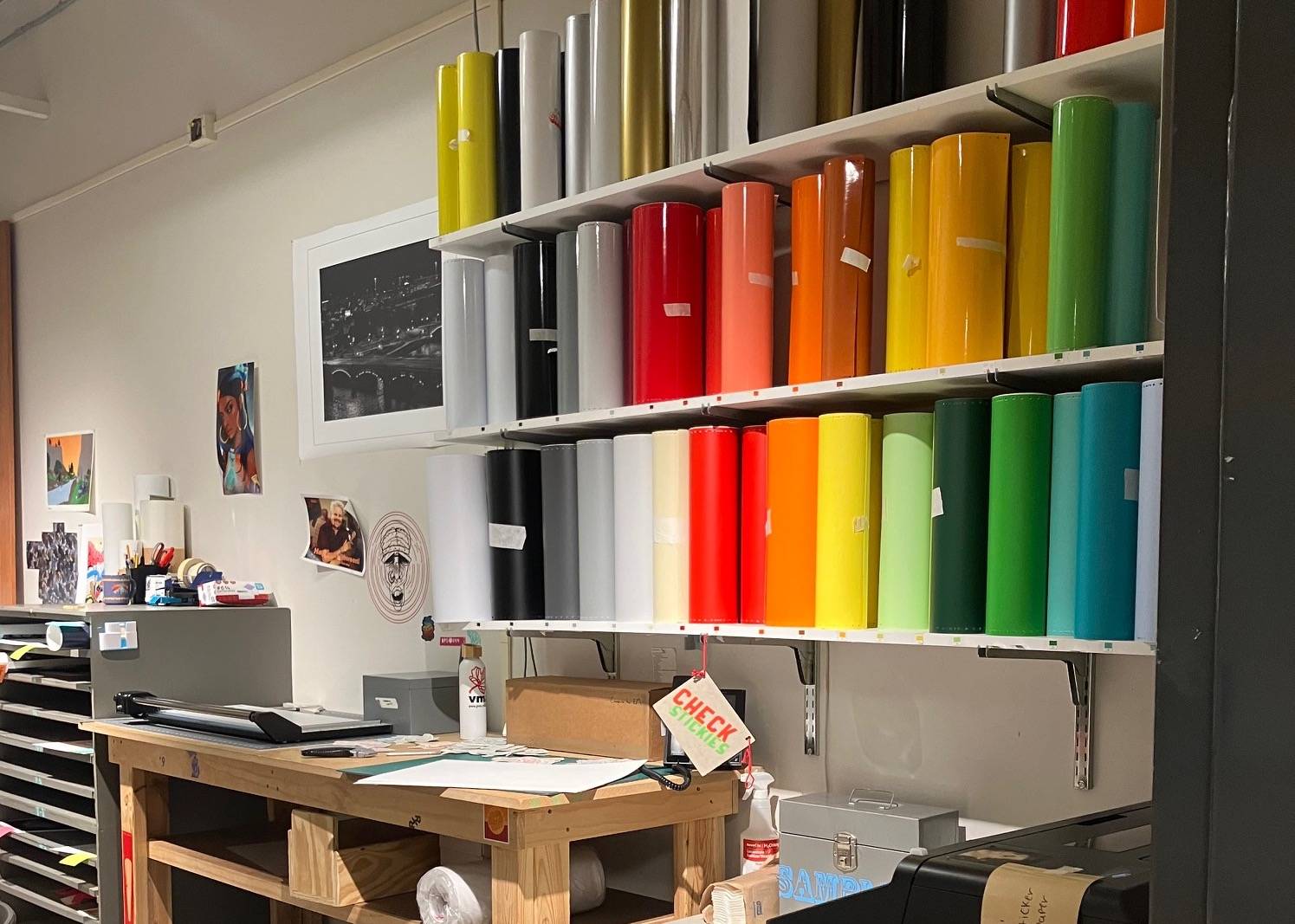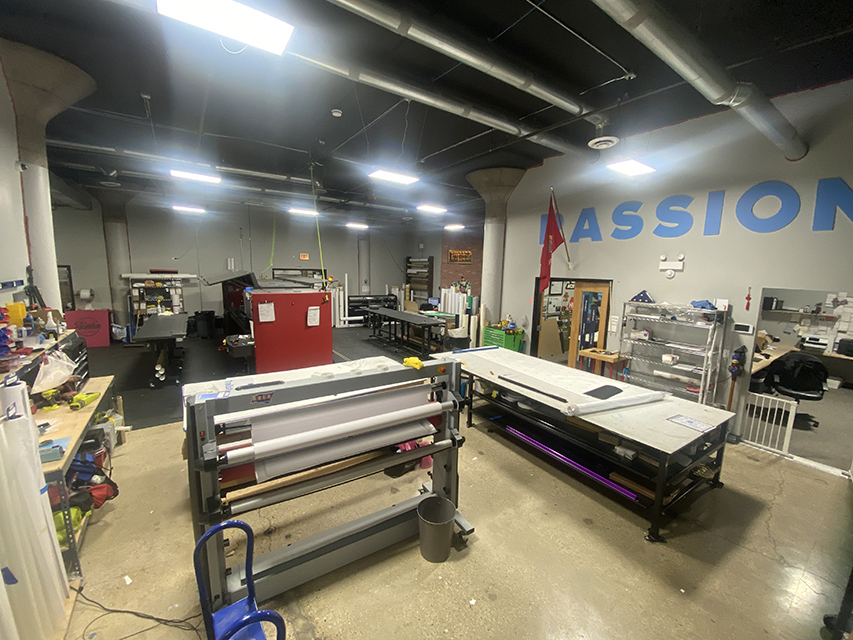What to Bring When Visiting a Print Shop Near Me for Custom Orders
The Ultimate Guide to Using Printing Providers for Customized Art Prints
Guiding through the globe of custom-made art prints calls for a clear understanding of different printing services. Musicians need to consider elements such as printing methods and materials to achieve the preferred end result. Each choice, from art work preparation to color calibration, plays an important duty in the final product. As they check out these elements, artists can expose the possibility for their work to get in touch with audiences in a meaningful way. What actions can they take to ensure their prints stand out?
Comprehending Various Kinds of Printing Services
Although many individuals may ignore the intricacies of printing services, recognizing the numerous kinds offered is vital for any person wanting to produce custom-made art prints. The most common types consist of electronic printing, counter printing, and display printing. Digital printing is favored for its quick turn-around and ability to create top notch images directly from digital data, making it suitable for tiny runs. In contrast, offset printing deals remarkable photo top quality and is cost-efficient for bigger quantities, utilizing plates to move ink onto paper. Display printing, typically made use of for textiles and promotional items, includes pressing ink via a mesh display, permitting vivid colors and structures. Each technique has its one-of-a-kind benefits and limitations, making it crucial for artists and designers to examine their specific demands, such as amount, preferred quality, and spending plan, prior to choosing a printing service that aligns with their artistic vision.
Picking the Right Materials for Your Prints
Picking the proper products is essential for attaining high-quality personalized art prints. Comprehending the different kinds of paper and the importance of ink top quality can considerably impact the result. Artists need to think about these factors to assure their vision is accurately stood for in the printed item.
Paper Types Explained
Choosing the appropriate paper kind is vital for accomplishing the wanted visual and sturdiness in custom-made art prints. Various options exist, each offering unique characteristics. Shiny paper boosts shade vibrancy and detail, making it excellent for photography prints. On the other hand, matte paper gives a softer coating, which is more effective for art work that calls for nuance and appearance. Great art paper, typically made from cotton or alpha cellulose, uses archival quality and appropriates for replicating intricate details in paintings (Print Shop Near Me). Furthermore, specialized papers, such as watercolor or canvas, can add special visual results. Ultimately, choosing the appropriate paper kind will greatly influence the final presentation, guaranteeing that the art work is both long-lasting and visually attractive
Ink High Quality Issues
Ink top quality plays a crucial role in the general success of customized art prints. High-grade inks assure vibrant colors, sharp details, and longevity, which are vital for showcasing creative job. When picking printing solutions, musicians need to take into consideration pigment-based inks over dye-based options, as they offer better discolor resistance and shade stability. Furthermore, the option of ink ought to enhance the selected paper type, enhancing the print's aesthetic impact. Environmental elements, such as moisture and temperature, can likewise affect ink efficiency; for that reason, musicians need to inquire about ink formulas that stand up to these components. Inevitably, purchasing exceptional ink quality can raise the end product, ensuring that the art print holds to the artist's vision for years ahead.
Checking Out Printing Techniques: Digital vs. Traditional
While both electronic and standard printing strategies have their special advantages, the decision on which technique to utilize often depends upon the details requirements of the art work. Digital printing masters adaptability and rate, permitting fast turnaround times and the ability to publish as needed. This approach is particularly useful for musicians who need special items or small runs, as it gets rid of the requirement for comprehensive arrangement processes.Conversely, conventional printing strategies, such as lithography and screen printing, usually produce richer colors and structures, appealing to musicians seeking a much more tactile and genuine finish. These techniques can boost the depth and top quality of the art work, making them suitable for larger editions. Furthermore, typical techniques might provide an unique visual that digital printing in some cases has a hard time to replicate. Ultimately, the option between these techniques need to consider elements like wanted top quality, quantity, and imaginative intent, guiding artists to the most appropriate choice for their projects.

Preparing Your Artwork for Printing
Successfully preparing art work for printing needs mindful focus to information, despite the picked printing method. Musicians have to guarantee that their files are developed at the ideal resolution, generally 300 DPI, to preserve intensity and clearness. The appropriate shade setting, normally CMYK for print, is crucial to accomplish the preferred color precision. Artists ought to likewise think about the measurements of the artwork, making certain to include hemorrhage locations if needed, to avoid any type of unwanted white edges after trimming.Additionally, file formats play an important role; TIFF and PDF are often preferred for premium prints. Prior to entry, it is necessary to review the art work for any type of imperfections or unwanted aspects. By diligently examining these elements, musicians can enhance the possibility of their prints aligning with their imaginative vision, eventually leading to a successful printing outcome.
The Relevance of Shade Calibration and Proofing
Color calibration and proofing are essential action in the printing process, as they assure that the last result properly reflects the musician's vision. Proper shade calibration guarantees that the shades displayed on the screen suit those that will be published. This process includes adjusting the screen settings, printer profiles, and inks to attain a consistent shade representation.Additionally, proofing enables musicians to preview their job before the final print run. This phase enables them to detect and remedy any kind of inconsistencies in color, saturation, or information, thereby lessening costly errors. By making use of electronic or hard-copy evidence, artists can make enlightened choices concerning adjustments needed for excellent results.Incorporating color calibration and proofing into the printing operations not just improves the quality of the last product yet also fosters a dependable collaboration between the artist and the printing service, guaranteeing satisfaction and integrity to the initial artwork.
Choosing the Perfect Size and Layout for Your Prints

Advertising and marketing and Selling Your Custom Art Prints
Marketing and offering custom art prints calls for a solid brand name identification to stand apart in an open market. Reliable on-line promotion strategies and the critical usage of social networks systems can greatly enhance visibility and interaction. By incorporating these elements, artists can develop an engaging existence that attracts possible purchasers.
Building Your Brand Name Identity
Establishing a solid brand identity is crucial for musicians seeking to successfully market and market their custom-made art prints. This identification includes the artist's unique style, worths, and story, which click to investigate resonate with potential customers. Artists ought to produce a natural aesthetic visibility across all systems, consisting of logo designs, shade systems, and typography that mirror their creative vision. Additionally, a clear objective declaration aids interact the artist's objective and interest. Involving narration about the inspiration behind each item can promote psychological links with the target market. Consistency in messaging, whether on social networks or product packaging, improves acknowledgment and trust fund. By carefully curating their brand name identity, artists can separate themselves in an open market, attracting dedicated consumers who appreciate their virtuosity.
Effective Online Promo Techniques
What methods can musicians employ to effectively advertise their custom-made art prints online? First, developing an expert website showcasing the artwork is crucial. This site needs to include in-depth descriptions and high-grade pictures to engage prospective buyers. Furthermore, artists can use email marketing by developing a customer list to share updates, promos, and new releases. Working together with blog owners and influencers in the art neighborhood can increase reach and credibility. Providing special items or limited-time discount rates can also create seriousness, encouraging purchases. Additionally, enhancing content for search engines through pertinent keyword phrases will boost visibility. Keeping a blog site concerning the imaginative process can bring in art enthusiasts, cultivating a much deeper link with the target market and boosting the overall advertising approach.
Using Social Media Site Operatings Systems
Social media systems serve as effective devices for musicians seeking to market and market their custom-made art prints. By leveraging systems like Instagram, Facebook, and Pinterest, musicians can display their work to a large audience. Involving visuals and tactical hashtags can raise presence, drawing possible purchasers to their accounts. Frequently posting material, such as new layouts or behind the curtain procedures, assists preserve target market interest and cultivates a feeling of neighborhood. Furthermore, musicians can utilize targeted marketing to reach specific demographics, boosting the opportunities of sales. Partnerships with influencers or various other artists can even more enhance direct exposure. Inevitably, a well-curated social media visibility not just advertises custom-made art prints but also builds a loyal consumer base gradually.
Frequently Asked Inquiries

Just how Do I Find Trustworthy Printing Service Providers?
To find trustworthy printing provider, one should look into online reviews, look for recommendations from peers, contrast profiles, demand samples, and examine client service responsiveness. This complete strategy assurances informed decisions and acceptable end results.
What Is the Common Turnaround Time for Custom Prints?
The regular turnaround time for custom-made prints varies by company, yet about his typically varies from a few days to two weeks. Aspects affecting this include order size, intricacy, and the details printing techniques used.
Can I Obtain a Reimbursement if I'm Not Satisfied With My Prints?
The question of obtaining a refund for disappointing prints often depends upon the specific printing service's policies. Lots of firms supply contentment guarantees, while others may have strict return conditions, stressing the importance of reviewing terms in advance.
Are There Any Type Of Hidden Expenses Connected With Printing Solutions?
Lots of printing services might consist of concealed prices such as setup charges, shipping costs, or surcharges for certain materials. It's crucial for customers to ask about all possible expenditures prior to finalizing their order.
Just How Can I Ensure My Prints Are Eco-friendly?
To assure prints are eco-friendly, one ought to select environmentally friendly inks, recycled paper, and sustainable printing methods. Looking into printing solutions that focus on sustainability and acquiring certifications can further guarantee very little ecological impact in the printing process. Guiding via the world of personalized art prints calls for a clear understanding of different printing services. Several individuals may neglect the intricacies of printing solutions, comprehending the various kinds readily available is necessary for any individual looking to create personalized art prints. The most usual kinds consist of digital printing, balance out printing, and display printing. Successfully preparing art work for printing needs mindful interest to information, regardless of the chosen printing strategy. Prints aimed at galleries may require common dimensions to assist in framing, whereas one-of-a-kind styles might appeal to collectors looking for something distinctive.Lastly, the printing service's capabilities need to be examined.